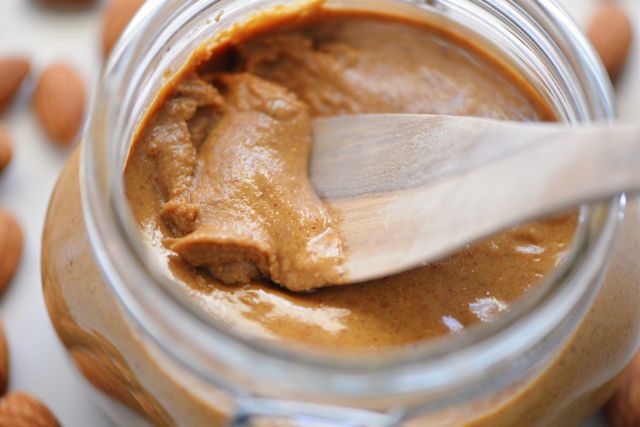Updated on November 18, 2024.
Maybe you don’t like peanut butter. Or maybe you’re allergic to peanuts—one of the most common food allergens in the United States. Or maybe you just want to try something different with your sandwich, banana, or oatmeal.
That’s where nut butters come in. Increasingly available in U.S. supermarkets, nut butters come in a variety of flavors, including almond, cashew, and walnut. They also contain several important nutrients, including protein, heart-healthy fats, fiber, magnesium, zinc, iron, and vitamin E. In fact, eating nut butter regularly is linked to lower chances of developing heart disease or type 2 diabetes.
If you’re interested in trying these tasty alternatives to peanut butter, it's wise to follow a few shopping guidelines:
- The fats found in nut butters are mostly unsaturated, which are good for your heart health. But they do contain some saturated fat and tend to be calorie dense. So, limit yourself to 1 or 2 tablespoons daily, or less if you eat any other nuts during the day.
- Look for products with a short ingredient list and little-to-no added sugar, salt, or hydrogenated vegetable oils.
- Once you open a jar of nut butter, store the rest in the fridge. It can go rancid over time.
With those tips in mind, here are nut butters you may want to try.
Almond butter
Since it has a similar texture, almond butter is perhaps the most popular alternative to peanut butter. And while you can easily buy a jar in a store, it’s also—like many nut butters—simple to make at home. Simply take 1 pound of raw almonds and run it through a food processor on low speed until it forms a smooth paste. This may take several minutes, but patience will pay off eventually.
Among its many uses, almond butter can be included in baked goods, made into a dip for fruits and vegetables, or added to smoothies.
Cashew butter
Creamy and mild, cashew butter can be used as a dairy substitute in some soup, sauce, and curry recipes (one reason why it’s popular among vegans). It tends to be a little lighter in protein than other nut butters.
Macadamia nut butter
Like cashew butter, macadamia nut butter can be used in some cases as an alternative to dairy products—especially butter and margarine. Give broiled tilapia or flounder a surprisingly flavorful twist, for example, by brushing it with a little melted macadamia butter. Smoothies and spreads are other tasty applications.
The main drawbacks of macadamia butter tend to be availability and cost. Comparatively speaking, macadamia nuts are often harder to find and more expensive than other nuts.
Pecan butter
While you can drizzle it on top of a sundae, don’t confuse pecan butter with butter pecan, a popular ice cream flavor combining the flavors of pecan, butter, and vanilla. If you’re making your own, try toasting the nuts beforehand and adding a little cinnamon towards the end of blending. Then, use it as you would any other nut butter.
Walnut butter
While every nut has advantages, walnuts are a special case. They’re one of the best dietary sources of alpha-linolenic acid (AHA), a healthy fat that can help reduce inflammation and lower the risk of heart disease. Other good sources include chia seeds, flaxseeds, canola oil, and soybean oil.
Walnut butter does tend to be a tad bitter. To counter this, add a little honey or warm spice to the butter itself. Or, pair it with something sweet, like apricot jam on a whole-grain bagel.







